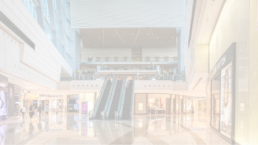Australian Shopfitting 101: Signs That It Is Time To Hire A Professional Shopfitter
What is shopfitting?
Shopfitting refers to the process of designing and fitting out retail spaces to create an appealing and functional environment for customers. It involves the installation of fixtures, fittings, and other elements that enhance the overall look and feel of a store. Shopfitting plays a crucial role in attracting customers and maximizing sales by creating a visually appealing and efficient retail space.

Shopfitting involves various aspects such as layout design, lighting, shelving, signage, and branding. A well-executed shopfitting project ensures that the store layout is optimized for customer flow, products are displayed effectively, and the overall ambiance of the store aligns with the brand image.
Importance of shopfitting for businesses
Shopfitting is not just about making a store look visually appealing; it is a strategic investment that can significantly impact a business's success. A well-designed store layout and attractive displays can attract customers, encourage them to stay longer, and ultimately increase sales.
First impressions matter, and the appearance of a store can make or break a customer's decision to enter and explore further. A professional fitout creates a positive first impression, making customers more likely to enter and browse through the products. It also helps in creating a cohesive brand image and identity, which is crucial for building customer trust and loyalty.
In addition to aesthetics, shopfitting also focuses on functionality and efficiency. A well-designed store layout ensures that customers can easily navigate through the space, find products they are looking for, and have an overall positive shopping experience. It also optimizes the use of space, enabling businesses to maximize their product displays and inventory.
Signs that it is time to hire a professional shopfitter
While some business owners may attempt to handle shopfitting themselves, certain signs indicate it is time to hire a professional shopfitter. These signs include:
- Inadequate store layout: If customers often complain about difficulty finding products or navigating through the store, it may be a sign that the store layout needs improvement. A professional shopfitter can analyze the space and create a more efficient layout that enhances the customer experience.
- Outdated or unattractive displays: If the store displays are outdated, worn out, or not visually appealing, it can negatively impact the perception of the brand and discourage customers from making purchases. A professional shopfitter can create modern and attractive displays that showcase products effectively.
- Lack of brand identity: If the store lacks a cohesive brand identity or fails to reflect the brand's values and image, it can confuse customers and dilute the brand's impact. A professional shopfitter can help in creating a store environment that aligns with the brand's identity and creates a consistent brand experience.
- Limited space utilization: If the store feels cluttered or there is not enough space for product displays, it may be a sign that the space is not being utilized effectively. A professional shopfitter can provide innovative solutions to maximize space utilization and optimize product displays.
- Poor lighting and signage: If the store is poorly lit or lacks clear signage, it can make it difficult for customers to navigate and find products. A professional shopfitter can design and install appropriate lighting and signage solutions that enhance the overall shopping experience.

Benefits of hiring a professional shopfitter
Hiring a professional shopfitter in Australia offers numerous benefits for businesses. These benefits include:
- Expertise and experience: Professional shopfitters have the knowledge, skills, and experience to design and execute shopfitting projects effectively. They understand the latest trends, best practices, and regulations in the industry, ensuring that the project is completed to the highest standards.
- Time and cost efficiency: Shopfitting can be a time-consuming and complex process, especially for business owners who are not familiar with it. Hiring a professional shopfitter frees up time for business owners to focus on other aspects of their business. Additionally, shopfitters often have access to industry connections and resources, enabling them to complete projects more efficiently and cost-effectively.
- Customized solutions: Professional shopfitters work closely with businesses to understand their unique requirements and brand identity. They can create customized shopfitting solutions that reflect the business's vision and goals, ensuring a tailored and personalized outcome.
- Quality craftsmanship: Professional shopfitters have the skills and expertise to deliver high-quality craftsmanship. They understand the importance of attention to detail and can ensure that every aspect of the shopfitting project is executed to perfection.
- Compliance with regulations: Shopfitting projects often involve compliance with building codes, safety regulations, and permits. Professional shopfitters have a thorough understanding of these requirements and can ensure that the project meets all necessary regulations and obtains the required permits.
Finding the right shopfitter in Australia
Finding the right shopfitter in Australia is crucial for a successful shopfitting project. Here are some tips for finding the right shopfitter:
- Research and compare: Start by researching different shopfitters in Australia and comparing their portfolios, experience, and client testimonials. Look for shopfitters who have experience in your industry and have a track record of delivering high-quality projects.
- Request quotes and proposals: Reach out to shortlisted shopfitters and request quotes and proposals for your project. Evaluate the quotes based on the scope of work, cost, timeline, and included services.
- Check credentials and certifications: Ensure that the shopfitter you choose has the necessary licenses, certifications, and insurance to carry out the project. This will protect you from any potential liabilities and ensure that the project is executed professionally.
- Communication and collaboration: Choose a shopfitter who communicates effectively and collaborates with you throughout the project. Effective communication is essential for a successful shopfitting project, as it ensures that your vision and requirements are understood and implemented.
- Visit completed projects: Whenever possible, visit completed projects by the shopfitter to get a firsthand experience of their work. This will give you a better idea of their craftsmanship, attention to detail, and overall quality.
Common mistakes to avoid in shopfitting projects
Shopfitting projects can be complex, and there are common mistakes that business owners should avoid to ensure a successful outcome. These mistakes include:
- Poor planning: Inadequate planning can lead to delays, cost overruns, and unsatisfactory results. It is crucial to invest time in thoroughly planning the shopfitting project, including design, materials, and timelines.
- Lack of communication: Effective communication between the business owner and the shopfitter is essential for a successful project. Clear and open communication ensures that expectations are aligned and that any issues or changes can be addressed promptly.
- Ignoring regulations and permits: Shopfitting projects often require compliance with building codes, safety regulations, and permits. Ignoring these requirements can result in penalties, delays, and potential legal issues. It is important to work with a shopfitter who understands and adheres to these regulations.
- Choosing aesthetics over functionality: While aesthetics are important, it is crucial to prioritize functionality in shopfitting. Ignoring functionality can lead to inefficient layouts, limited storage space, and poor customer experiences.
- Not considering future needs: Shopfitting projects should take into account the future needs and growth of the business. Failing to plan for future expansions or changes in product offerings can result in costly modifications down the line.
By being aware of these common mistakes and working closely with a professional shopfitter, business owners can avoid costly errors and achieve their desired shopfitting outcomes.

Visually appealing and functional retail environment
Shopfitting plays a vital role in creating a visually appealing and functional retail environment for businesses in Australia. It enhances the overall customer experience, attracts more customers, and increases sales. When the signs indicate the need for professional shopfitting, it is essential to hire a reputable shopfitter who can deliver high-quality results.
By hiring a professional shopfitter, businesses can benefit from their expertise, experience, and ability to create customized solutions. It is crucial to invest time in finding the right shopfitter who aligns with your vision and budget. Additionally, being aware of shopfitting trends, regulations, and common mistakes will help ensure a successful shopfitting project.
Remember, shopfitting is an investment in the success of your business. By creating an appealing and functional retail space, you can attract and retain customers, enhance your brand image, and ultimately drive business growth.
Australian Shopfitting 101: Shop Fitting and Retail Display Solutions for Fall
Shopfitting is a crucial aspect of retail business in Australia. It involves the planning, design, and installation of fixtures, fittings, and displays in a retail space to create an inviting and functional environment for customers. Effective shopfitting can enhance the overall shopping experience, attract more customers, and ultimately increase sales. In Australia, where the retail industry is highly competitive, investing in professional shopfitting solutions is essential for businesses to stay ahead.

Understanding the Importance of a Well-Designed Retail Display
A well-designed retail display is a powerful tool for attracting customers and influencing their buying decisions. In the fall season, when consumers are looking for new trends and inspirations, an eye-catching display can make a significant impact. It is important to create a display that reflects the spirit of autumn, incorporating warm colors, natural elements, and seasonal products. By incorporating these elements, retailers can create a visually appealing and engaging environment that encourages customers to explore and make purchases.
Furthermore, a well-designed retail display can also help with product placement, organization, and navigation within the store. Strategic placement of products and effective signage can guide customers through the store and increase their exposure to different merchandise. This can lead to increased sales and a more positive shopping experience for customers.
Key Considerations for Shopfitting in Autumn
When planning a shopfitting project for the autumn season in Australia, there are several key considerations to keep in mind. First and foremost, it is important to understand the target audience and their preferences during this season. By conducting market research and analyzing consumer behavior, retailers can gain valuable insights into what products and themes resonate with customers during the fall season. This information can then be used to inform the shopfitting design and display choices.
Another important consideration is the incorporation of seasonal products and promotions. Autumn-themed displays can create a sense of excitement and anticipation among customers. Retailers can showcase fall fashion trends, seasonal decorations, and themed product bundles to capture the interest of shoppers. Additionally, it is essential to ensure that the shopfitting design allows for easy product rotation and flexibility to accommodate changing seasonal displays.
Choosing the Right Shopfitting Materials for a Fall-Themed Display
Selecting the right materials for a fall-themed display is crucial for creating an authentic and visually appealing retail environment. Natural materials, such as wood, stone, and metal, can evoke a sense of warmth and create a connection to the season. Incorporating these materials into fixtures, shelving, and display units can add a touch of rustic charm to the store.
In addition to materials, lighting plays a significant role in creating the right ambiance for a fall-themed display. Warm, soft lighting can enhance the colors and textures of the products, creating a cozy and inviting atmosphere. Retailers can consider using LED lights with adjustable color temperatures to create different moods and highlight specific areas of the store.
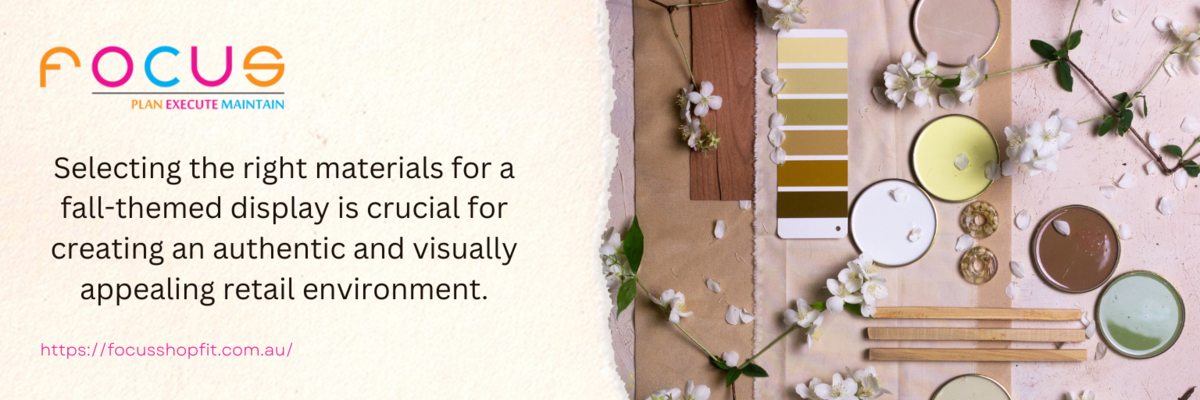
Optimizing Your Retail Space for the Autumn Season
Optimizing the retail space for the autumn season involves strategic planning and layout design. An effective layout can improve customer flow, maximize product exposure, and create a seamless shopping experience. Here are some tips for optimizing your retail space for the fall season:
- Storefront Display: Create an attractive and captivating storefront display that showcases the fall-themed products and entices customers to enter the store. Use eye-catching signage, seasonal decorations, and well-arranged merchandise to create a strong first impression.
- Product Placement: Place high-demand fall products in easily accessible areas to encourage impulse purchases. Use visual merchandising techniques, such as grouping related items and creating focal points, to draw attention to specific products.
- Seasonal Zones: Create dedicated zones within the store that highlight different fall themes or product categories. For example, a cozy lounge area with autumn-inspired furniture can showcase home decor items, while a fashion runway display can feature the latest fall fashion trends.
- Comfortable Spaces: Provide comfortable seating areas or rest zones where customers can relax and take a break. This can enhance the overall shopping experience and encourage customers to spend more time in the store.
Hiring a Professional Shopfitting Company in Australia
To ensure a successful shopfitting project for the fall season, it is advisable to hire a professional shopfitting company in Australia. A professional shopfitting company has the expertise, experience, and resources to deliver high-quality results that align with your business objectives. They can provide comprehensive services, including design, project management, installation, and maintenance, to ensure a seamless and efficient shopfitting process.
When choosing a shopfitting company, consider their portfolio, client testimonials, and track record of successful projects. It is also important to discuss your specific requirements, budget, and timeline with the company to ensure a clear understanding of expectations. By partnering with a professional shopfitting company, you can elevate your retail display solutions for the fall season and create a memorable shopping experience for your customers.
Shopfitting Mistakes to Avoid During the Fall Season
While effective shopfitting can significantly enhance the retail experience, there are common mistakes that retailers should avoid during the fall season. These mistakes can undermine the impact of the shopfitting efforts and negatively affect sales. Here are some key mistakes to avoid:
- Overcrowding: Avoid overcrowding the store with too many products or displays. This can overwhelm customers and make it difficult for them to navigate and find what they are looking for. Maintain a balance between showcasing products and creating an open and inviting space.
- Poor Lighting: Inadequate or harsh lighting can diminish the appeal of the fall-themed display. Ensure that the lighting is well-balanced and warm, and complements the colors and textures of the products.
- Lack of Flexibility: Failing to design the shopfitting layout with flexibility in mind can limit the ability to change displays and adapt to seasonal trends. Plan for easy product rotation, modular fixtures, and flexible display units to accommodate changing themes and promotions.
- Inconsistent Branding: Maintain consistency in branding throughout the store. A cohesive and well-executed brand image can build trust and loyalty among customers.
By avoiding these common shopfitting mistakes, retailers can maximize the impact of their fall-themed displays and create a positive shopping experience for their customers.

Elevating Your Retail Display Solutions for Fall in Australia
Shopfitting plays a crucial role in creating an inviting and functional retail environment in Australia. A well-designed retail display can attract customers, drive sales, and enhance the overall shopping experience. By understanding the importance of shopfitting, staying updated on the latest trends, and considering key factors for the fall season, retailers can optimize their retail space and elevate their display solutions.
Investing in professional shopfitting services is highly recommended to ensure a successful shopfitting project. By partnering with a reputable shopfitting company, retailers can benefit from their expertise, experience, and resources to create impactful and memorable fall-themed displays.
With careful planning, attention to detail, and avoidance of common shopfitting mistakes, retailers in Australia can create a retail space that captivates customers, reflects the spirit of fall, and drives business success. Elevate your retail display solutions for fall and make a lasting impression on your customers in Australia.
Australian Shopfitting 101: What Makes a Good Shop Display for Autumn?
Shopfitting plays a vital role in the success of retail stores, and this is true for Australian businesses as well. Shopfitting refers to the process of designing and fitting out a retail space to create an inviting and visually appealing environment for customers. When it comes to the autumn season, updating shop displays becomes even more important. The changing colors and themes of autumn present a unique opportunity for retailers to create a captivating shopping experience that aligns with the season. In this article, we will explore the key aspects of Australian shopfitting for autumn, including the latest trends, benefits of store updates, and useful tips for planning your retail store update.

Importance of updating retail stores for autumn
Autumn brings about a shift in mood and aesthetics, and retail stores need to adapt to these changes. Updating your shop displays for autumn not only keeps your store fresh and engaging but also helps to create a strong connection with your customers. By incorporating autumn themes and colors into your displays, you can effectively capture the attention of potential buyers and entice them to explore your products.
Additionally, a well-designed autumn display can evoke emotions and create a memorable shopping experience, leaving a lasting impression on your customers. This, in turn, can lead to increased foot traffic, longer browsing times, and ultimately, more sales for your business.
Benefits of a store update or renovation
Updating your retail store for autumn offers numerous benefits beyond just creating an attractive shop display. Firstly, it allows you to showcase your brand's adaptability and relevance. By refreshing your store's appearance, you demonstrate to your customers that you are up-to-date with the latest trends and committed to providing them with a unique shopping experience. This can help build brand loyalty and encourage repeat visits.
Secondly, a store update or renovation allows you to reorganize your space and optimize the layout for better product visibility and flow. This can lead to improved customer navigation and increased sales. Lastly, a refreshed store environment can boost employee morale and motivation, as a visually appealing and well-organized workspace can create a positive and inspiring atmosphere. Overall, investing in a store update or renovation for autumn can have a significant impact on your business's success.

Planning your retail store update for autumn
Before embarking on your retail store update for autumn, it is crucial to have a well-thought-out plan in place. Start by assessing your current shop displays and identifying areas that need improvement or modification. Consider the themes and colors associated with autumn and how they can be incorporated into your displays. Create a detailed budget and timeline for the update, taking into account any necessary repairs or renovations.
It is also important to conduct market research to understand the preferences and expectations of your target audience during the autumn season. This will help you tailor your displays to their needs and preferences. Finally, involve your team in the planning process and assign specific responsibilities to ensure a smooth execution of the update.
Key considerations for shopfitting in Australia
When it comes to shopfitting in Australia, there are several key considerations to keep in mind. Firstly, it is important to comply with local regulations and obtain any necessary permits or approvals before making any structural or design changes to your store. Familiarize yourself with the requirements of the Australian Building Code and consult with professionals if needed.
Secondly, consider the climate and weather conditions specific to your location in Australia. Ensure that your shop displays are designed to withstand any seasonal changes, such as temperature fluctuations or humidity. Additionally, take into account the cultural diversity in Australia and aim for inclusivity in your displays. Consider incorporating elements that resonate with different cultural backgrounds to create a welcoming and inclusive shopping environment for all customers.
Hiring a professional shopfitting company in Australia
To ensure a successful shop display update for autumn, it is advisable to hire a professional shopfitting company in Australia. These experts have the experience and expertise to design and execute a shopfitting strategy that aligns with your business goals and the autumn season. They can help you with everything from conceptualization and design to installation and maintenance.
When selecting a shopfitting company, consider their portfolio, reputation, and client testimonials. It is important to choose a company that understands your brand identity and can translate it into a visually stunning and functional shop display. By partnering with a professional shopfitting company, you can save time, avoid costly mistakes, and achieve the desired results for your autumn shop update.
Cost-effective shopfitting ideas for autumn
Shopfitting updates for autumn don't have to break the bank. Several cost-effective ideas can help you create an impressive shop display within a limited budget. First, consider utilizing reusable and versatile fixtures and displays. Adjustable shelving, modular units, and movable partitions can allow you to adapt your shop layout and displays as needed without incurring additional expenses.
Explore DIY options for creating eye-catching displays. Using recycled materials, repurposing existing fixtures, and incorporating handmade elements can add a unique touch to your autumn shop display while keeping costs low. Lastly, consider partnering with local artists or artisans to create custom-made decorations or installations for your store. This not only supports the local creative community but also adds a personalized and distinctive element to your shopfitting strategy.

Appealing and Engaging Shop Displays
Australian shopfitting plays a crucial role in creating an appealing and engaging shop display for autumn. By updating your retail store with autumn themes, colors, and trends, you can create a memorable shopping experience for your customers and increase your chances of success. From planning and budgeting to hiring professionals and implementing cost-effective ideas, there are several key considerations to keep in mind when embarking on a shopfitting project. Remember, a well-executed shopfitting strategy can make a significant difference and set your business apart from the competition in the bustling Australian retail landscape.
Australian Shopfitting 101: Autumn Is Here, Is Your Store Ready?
Shopfitting plays a crucial role in creating an attractive and functional retail space. In Australia, where the retail industry is highly competitive, it becomes even more important to ensure that your store stands out from the crowd. As autumn approaches, it is the perfect time to evaluate your shopfitting strategy and make necessary adjustments to prepare your store for the new season.

The importance of preparing your store for autumn
Autumn brings about changes in consumer preferences and buying behavior. As the weather cools down, people start looking for warm and cozy products. By preparing your store for autumn, you can tap into these changing consumer needs and create a shopping experience that resonates with your target audience.
Shopfitting is not just about making your store visually appealing; it also involves optimizing the layout and flow of the space to maximize sales and customer satisfaction. By incorporating autumn-themed displays and strategically placing seasonal merchandise, you can entice customers to spend more time in your store and increase their likelihood of making a purchase.
Understanding the role of shopfitting in retail store displays
Retail store displays are a key component of shopfitting. They serve as a powerful tool to showcase your products and create a visually appealing environment that attracts customers. In autumn, it is important to align your retail store displays with the season to create a cohesive and engaging shopping experience.
One effective way to achieve this is by incorporating autumn colors and textures into your displays. Warm hues like deep reds, oranges, and browns can create a cozy and inviting atmosphere. Additionally, using natural materials such as wood and foliage can add a touch of warmth and bring the essence of autumn into your store.
Key elements of a successful autumn shopfitting strategy
A successful autumn shopfitting strategy involves careful planning and consideration of various elements. Here are a few key elements to focus on when preparing your store for the autumn season:
- Lighting
Proper lighting can enhance the mood and ambiance of your store. In autumn, consider using warm lighting to create a cozy atmosphere that complements the seasonal theme.
- Signage
Well-designed and strategically placed signage can guide customers through your store and highlight special promotions or seasonal offers. Incorporating autumn-inspired graphics and colors in your signage can further reinforce the seasonal theme.
- Shelving and displays
Optimize your shelving and displays to showcase autumn-themed merchandise. Consider using tiered displays to create visual interest and highlight key products.
- Flooring and fixtures
Pay attention to the flooring and fixtures in your store. Consider using materials and finishes that are in line with the autumn theme. For example, wooden flooring can create a warm and inviting feel.
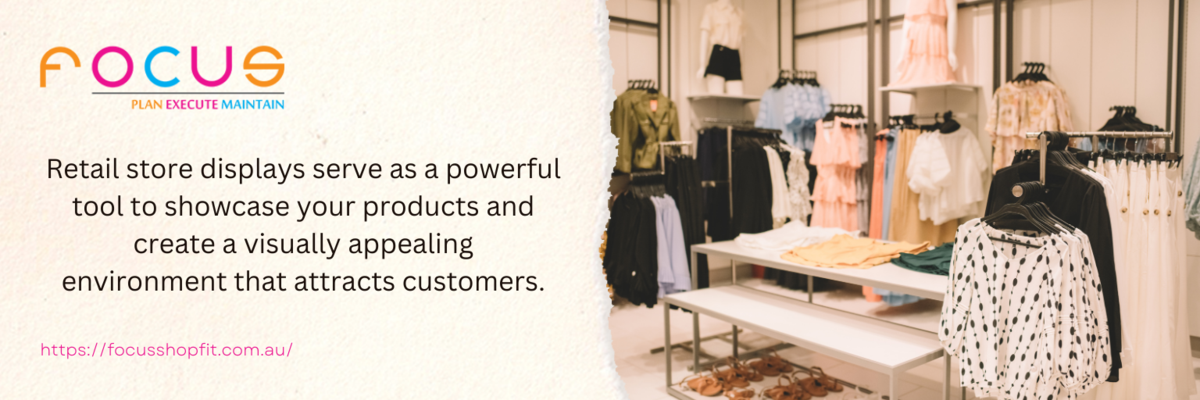
Choosing the right shopfitting materials for your store
When it comes to choosing shopfitting materials for your store, it is important to consider factors such as durability, aesthetics, and budget. In Australia, where the climate can vary across different regions, it is crucial to select materials that can withstand the environmental conditions.
For autumn shopfitting, materials that exude warmth and coziness work well. Wood, for instance, is a popular choice as it adds a natural and rustic feel to the store. Additionally, fabrics like wool and velvet can be used to create soft and inviting textures.
It is also important to consider the maintenance requirements of the materials. Choosing materials that are easy to clean and maintain can save you a lot of time and effort in the long run.
Top Autumn Shopfitting Trends in Australia
Staying up-to-date with the latest shopfitting trends can give your store a competitive edge. Here are some top autumn shopfitting trends in Australia:
- Nature-inspired displays
Incorporating natural elements like foliage, dried flowers, and natural materials into your displays can create an organic and inviting atmosphere.
- Minimalist aesthetics
Simplicity is key in autumn shopfitting. Clean lines, neutral colors, and a clutter-free environment can create a sense of calmness and sophistication.
- Personalized experiences
Creating personalized experiences for customers can leave a lasting impression. Consider incorporating interactive elements, such as digital screens or personal styling services, to enhance the customer journey.
Practical tips for effective retail store shopfitting
Effective shopfitting requires attention to detail and careful planning. Here are some practical tips to help you achieve successful retail store shopfitting:
- Conduct a store audit
Start by conducting a thorough audit of your store. Evaluate the current layout, displays, and fixtures to identify areas that need improvement or adjustment.
- Understand your target audience
Consider the preferences and needs of your target audience when planning your shopfitting strategy. Understanding their buying behavior and preferences can help you create a store environment that resonates with them.
- Create focal points
Designate focal points in your store to draw customers' attention to key products or promotions. This can be achieved through strategic placement of displays, lighting, or signage.
- Regularly update displays
Keep your displays fresh and engaging by regularly updating them. This can help maintain customer interest and encourage them to visit your store again.
Hiring a professional shopfitting service for your store
While it is possible to handle shopfitting in-house, hiring a professional shopfitting service can offer numerous benefits. Professional shopfitters have the expertise and experience to create a customized shopfitting strategy that aligns with your brand and target audience.
Moreover, professional shopfitters can save you time and ensure that the shopfitting process is executed efficiently. They can also provide valuable advice on the latest trends and materials, helping you make informed decisions for your store.

Get your store ready for autumn with shopfitting
As autumn approaches, it is essential to prepare your store for the changing season. Shopfitting plays a crucial role in creating an attractive, functional, and seasonally relevant retail space. By incorporating autumn-themed displays, choosing the right materials, and following the latest shopfitting trends, you can create a shopping experience that resonates with your customers and boosts your sales.
Investing in professional shopfitting services can provide you with the expertise and support needed to achieve optimal results. So, take the necessary steps to get your store ready for autumn and make the most of this vibrant season.
Australian Shopfitting 101: Updating Your Retail Store for Autumn
Shopfitting is a crucial aspect of running a successful retail store. It involves the process of designing, planning, and installing fixtures, fittings, and equipment to create an attractive and functional retail space. With autumn just around the corner, it's the perfect time to consider updating your store to reflect the changing season. This article will explore the importance of shopfitting for your retail store, the benefits it can bring, the latest trends for autumn in Australia, and provide valuable tips to help you plan an effective store update.

The importance of updating your retail store for autumn
Updating your retail store for autumn is more than just a cosmetic change. It plays a vital role in attracting customers and creating a pleasant shopping experience. As the seasons change, customers' preferences and needs evolve, and it's important to align your store's ambiance and offerings accordingly. Autumn brings with it a shift in colors, textures, and themes, and updating your store to reflect these changes can create a sense of novelty and excitement among your customers.
Additionally, an updated store showcases your commitment to staying relevant and meeting the needs of your target audience. It demonstrates that you are aware of current trends and willing to adapt to provide a memorable shopping experience. By investing in a store update for autumn, you can enhance your brand image, increase customer loyalty, and ultimately boost sales.
Benefits of shopfitting for your store
Shopfitting offers numerous benefits for your retail store, regardless of the season. Firstly, it allows you to maximize the use of your available space. With effective planning and design, you can optimize the layout of your store, ensuring that every square inch is utilized efficiently. This can lead to increased product visibility, improved customer flow, and ultimately, more sales.
Shopfitting enables you to create a visually appealing store environment. By incorporating the latest design trends and aesthetics, you can capture the attention of passersby and entice them to step inside. A well-designed store with attractive displays and fixtures can make a lasting impression on customers, encouraging them to explore further and make a purchase.
Furthermore, shopfitting allows you to enhance the functionality of your store. By strategically placing shelves, racks, and other fixtures, you can create a seamless shopping experience where customers can easily find what they're looking for. This can lead to increased customer satisfaction and business expansion.

Shopfitting trends for autumn in Australia
As autumn approaches in Australia, several shopfitting trends can help you create an inviting and on-trend store environment. One popular trend is the use of warm, earthy colors such as rich brown, burnt orange, and deep red. These colors can be incorporated into your store's walls, fixtures, and displays, creating a cozy and welcoming atmosphere.
Another trend is the integration of natural elements. Autumn is a season known for its beautiful foliage and natural textures. Consider incorporating elements such as wood, stone, and plants into your store design. This can add a touch of warmth and authenticity, creating a connection with customers.
Additionally, creating dedicated spaces for seasonal products can be a powerful way to attract attention. Whether it's a display of autumn-themed clothing or a corner dedicated to fall-inspired home decor, showcasing seasonal items in a prominent and visually appealing way can pique customers' interest and drive sales.
Planning your store update for autumn
Before diving into your store update, it's important to plan and strategize. Start by evaluating your current store layout and identifying areas that need improvement. Consider factors such as customer flow, product placement, and overall aesthetics. This will help you pinpoint the areas that require attention and guide your decision-making process.
Next, create a budget for your store update. Determine how much you're willing to invest in fixtures, fittings, and any necessary renovations. It's essential to keep a balance between cost-effectiveness and quality in your store. Research suppliers and contractors to ensure you are getting the best value for your money.
Furthermore, consider the timeline for your store update. Autumn is a busy season for retail. Plan your store update accordingly, allowing enough time for the changes to be implemented without disrupting your business operations.
Hiring a professional shopfitting company
If you're not confident in your shopfitting abilities or simply prefer to leave it to the experts, hiring a professional shopfitting company can be a wise decision. These companies specialize in creating tailored store designs that align with your brand and target audience. They have the knowledge, experience, and resources to execute your store update efficiently and effectively.
When selecting a shopfitting company, make sure to do your research. Look for shopfitting experts with a good reputation and positive customer testimonials. Review their portfolio to get a sense of their design aesthetic and capabilities. Additionally, consider their level of communication and customer service. A good shopfitting company will collaborate closely with you throughout the process, ensuring your vision is brought to life.

Next steps for your store update
Updating your retail store for autumn in Australia is a strategic move that can have a positive impact on your business. By embracing the season and incorporating autumnal elements into your store design, you can create an inviting and on-trend shopping experience for your customers. Whether you choose to hire a professional shopfitting company or take a DIY approach, the key is to carefully plan and execute your store update to align with your brand and target audience.
Australian Shopfitting 101: A Complete Guide to Shopfitting in 2024
Shopfitting plays a crucial role in creating a visually appealing and functional retail space. In Australia, where the retail industry continues to thrive, shopfitting is more important than ever. It involves the design, construction, and installation of fixtures and fittings in retail stores, ensuring that the space is optimized for both customers and businesses.

A well-executed shopfitting project can enhance the overall shopping experience, attract more customers, and ultimately increase sales. It involves proper planning, coordination, and great attention to detail. From choosing the right materials and designs to incorporating the latest technology, shopfitting can transform a retail space into a thriving and immersive environment.
The Importance of Shopfitting in Retail Spaces
Shopfitting is not just about making a store look good; it is about creating an environment that encourages customers to explore, engage, and make purchases. In Australia, where competition among retailers is fierce, shopfitting has become a crucial aspect of staying ahead in the market. When done right, shopfitting can help retailers:
- Create a Memorable Brand Experience: The design and layout of a retail space can play a significant role in shaping a brand's identity. Customers are more likely to remember and connect with a store that reflects the values and personality of the brand.
- Optimize Store Layout: Shopfitting involves careful consideration of the flow and layout of a store. By strategically placing displays, shelving, and checkout counters, retailers can guide customers through the store and maximize opportunities for product exposure.
- Enhance Visual Merchandising: Effective shopfitting allows retailers to display their products in an attractive and organized manner. By using lighting, signage, and creative displays, retailers can draw attention to specific products and create a visually compelling shopping experience.
- Improve Customer Satisfaction: A well-designed retail space can make customers feel comfortable and engaged. By considering factors such as lighting, acoustics, and overall ambiance, shopfitters can create an environment that encourages customers to spend more time in the store and make repeat visits.
Emerging Shopfitting Trends in 2024
Several emerging shopfitting trends are set to transform the retail landscape in Australia. These trends reflect the changing preferences and expectations of customers and the advancements in technology.
- Virtual and Augmented Reality: Virtual and augmented reality technologies are revolutionizing the way customers interact with products in-store. From virtual try-on experiences to interactive product demonstrations, these technologies provide immersive and engaging experiences.
- Personalization and Customization: Customers are increasingly looking for unique personalized experiences. In 2024, shopfitting will focus on creating spaces that can be tailored to individual preferences. This includes customizable fixtures, interactive displays, and personalized recommendations.
- Integration of Social Media and Influencer Marketing: Retailers are recognizing the power of social media and influencer marketing in driving sales. Shopfitting in 2024 will incorporate spaces specifically designed for social media-worthy moments, encouraging customers to share their experiences online.
- Smart and Connected Stores: The Internet of Things (IoT) is transforming the way retailers operate. In 2024, shopfitting will involve the integration of smart technologies that enable real-time inventory tracking, personalized promotions, and seamless checkout experiences.
Shopfitting Materials and Designs for 2024
In 2024, shopfitting materials and designs will continue to evolve to meet the changing demands of retailers and customers. Here are some materials and designs that will be on-trend:
- Natural and Sustainable Materials: The use of natural and sustainable materials, such as reclaimed wood, bamboo, and recycled plastic, will continue to gain popularity. These materials not only contribute to a more eco-friendly retail space but also add a touch of warmth and authenticity.
- Minimalistic and Clean Designs: Minimalism has been a popular design trend in recent years and will continue to be favored in 2024. Clean lines, neutral colors, and uncluttered spaces create a sense of calm and allow products to take center stage.
- Mixed Materials and Textures: Combining different materials and textures adds visual interest and depth to a retail space. In 2024, shopfitters will experiment with contrasting materials, such as metal and wood, or matte and glossy surfaces, to create unique and visually appealing displays.
- Biophilic Design: Biophilic design aims to connect people with nature by incorporating natural elements into the built environment. In 2024, expect to see more retail spaces featuring living walls, natural lighting, and organic shapes, creating a harmonious and soothing atmosphere.
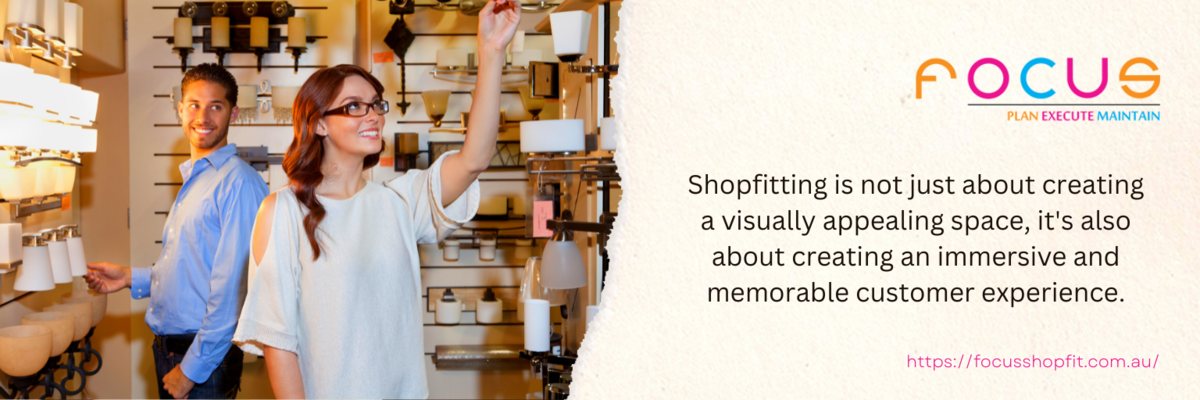
Incorporating Technology in Shopfitting
Technology is revolutionizing the way shopfitting is approached and executed. From interactive displays to smart lighting systems, incorporating technology can enhance the overall shopping experience and drive customer engagement. Here are some ways technology is being integrated into shopfitting:
- Interactive Displays: Touchscreens, augmented reality mirrors, and interactive product catalogs allow customers to explore products more engagingly and interactively. These displays provide additional product information, recommendations, and even virtual try-on experiences.
- Smart Lighting Systems: Lighting plays a crucial role in creating the right ambiance and highlighting products. Smart lighting systems can be programmed to adjust color temperature and brightness levels, creating different moods and enhancing the visual appeal of the space.
- Mobile Integration: Mobile devices have become an integral part of the shopping experience. Shopfitting in 2024 will focus on integrating mobile technology, such as mobile payment systems, personalized notifications, and location-based services, to enhance customer convenience and engagement.
- Data Analytics and Artificial Intelligence: Retailers are leveraging data analytics and artificial intelligence to gain insights into customer behavior and preferences. Shopfitting in 2024 will involve the integration of sensors and cameras that can collect data on customer movement, product interactions, and buying patterns, allowing retailers to make data-driven decisions.
Creating an Immersive Customer Experience through Shopfitting
Shopfitting is not just about creating a visually appealing space; it is about creating an immersive and memorable customer experience. In 2024, shopfitters will focus on enhancing the overall shopping journey and creating moments that leave a lasting impression. Here are some strategies to create an immersive customer experience:
- Aesthetic Cohesion: Every aspect of the retail space, from the store layout to the fixtures and displays, should be cohesive and aligned with the brand's identity. Consistency in design, colors, and materials creates a sense of harmony and reinforces the brand's message.
- Engaging Visual Merchandising: Visual merchandising is a powerful tool to capture customers' attention and guide them through the store. In 2024, shopfitters will focus on creating visually compelling displays that tell a story and evoke emotions.
- Multisensory Experiences: Engaging multiple senses can create a more immersive experience. In 2024, shopfitters will incorporate elements such as ambient scents, background music, and interactive displays that appeal to sight, sound, smell, and touch.
- Seamless Customer Journey: A seamless customer journey involves removing any friction points and ensuring a smooth transition from one stage to another. In 2024, shopfitters will focus on optimizing store layouts, wayfinding signage, and checkout processes to enhance convenience and reduce customer frustration.
Shopfitting Tips and Best Practices
To ensure a successful shopfitting project, it is important to follow some key tips and best practices. Here are some guidelines for achieving the best results:
- Plan Ahead: Proper planning is crucial for a successful shopfitting project. Start by defining your store’s goals, budget, and project timeline. Consider factors such as store layout, target audience, and brand identity. Engage with a professional shopfitter early in the process to ensure a smooth execution.
- Collaborate with Professionals: Shopfitting is a complex process that requires expertise in design, construction, and project management. Collaborate with experienced professionals who understand the unique challenges of shopfitting in Australia. They can provide valuable insights and ensure a seamless execution.
- Prioritize Safety and Compliance: Safety should be a top priority in shopfitting projects. Ensure that all fixtures and fittings meet relevant safety standards and comply with local regulations. Engage with professionals who have a strong track record in adhering to safety guidelines.
- Consider Future Flexibility: Retail trends are constantly evolving, and your shopfitting should be able to adapt to changing needs. Consider modular fixtures and flexible layouts that can be easily modified in the future. This will save time and costs when it comes to refreshing your retail space.
Hiring a Professional Shopfitter in Australia
To achieve the best results in shopfitting, it is recommended to hire a professional shopfitter with experience in the Australian market. Here are some factors to consider when selecting a shopfitting partner:
- Industry Expertise: Look for a shopfitter with a proven track record in the retail industry. They should have experience working with various types of retail spaces, from small boutiques to large department stores.
- Portfolio and References: Review the shopfitter's portfolio and ask for references from previous clients. This will give you an idea of their design capabilities, craftsmanship, and ability to deliver projects on time and within budget.
- Collaborative Approach: A successful shopfitting project requires collaboration between the shopfitter and the retailer. Look for a shopfitter who values open communication, understands your vision, and is willing to work closely with you to achieve your goals.
- Attention to Detail: Shopfitting is a detail-oriented process that requires meticulous attention to detail. Ensure that the shopfitter has a reputation for delivering high-quality workmanship and finishes.

Transforming Your Retail Space with Shopfitting Trends in 2024
Shopfitting is a critical aspect of creating a successful retail space in Australia. By staying up-to-date with the latest trends, incorporating technology, and focusing on creating immersive customer experiences, retailers can transform their stores into thriving and memorable destinations.
Shopfitting will continue to evolve, driven by advancements in technology and changing consumer preferences. By embracing these emerging trends, retailers can stay ahead of the competition and create retail spaces that captivate and engage customers.
If you're considering a shopfitting project in Australia, remember to plan, collaborate with professionals, and prioritize safety and compliance. By hiring a professional shopfitter with industry expertise, you can ensure seamless execution and achieve the best results for your retail space. Transform your retail space with shopfitting trends in 2024 and create an environment that delights and inspires your customers.
Australian Shopfitting 101: Effective and Affordable Seasonal Shop Transformations for Valentine’s Day & Other Events
Shopfitting is an essential aspect of running a successful retail business. It involves the design and installation of fixtures, fittings, and displays in a store to create an attractive and functional space for customers. In Australia, shopfitting has gained significant importance due to the ever-changing consumer trends and the need for businesses to stay relevant in the competitive market. This article will explore the concept of shopfitting and how it can help retailers achieve effective and affordable display changes.

The Importance of Effective and Affordable Display Changes
In the fast-paced world of retail, businesses must adapt to changing seasons and trends. Effective and affordable display changes play a vital role in attracting customers, increasing sales, and creating a memorable shopping experience. By refreshing the look and feel of a store to align with different seasons, holidays, or events, retailers can create a sense of excitement and urgency among customers. This can lead to increased foot traffic, longer dwell times, and ultimately, higher conversion rates.
Understanding the Concept of Seasonal Store Transformations
Seasonal store transformations involve updating the store's layout, fixtures, and displays to reflect the changing seasons and associated themes. It allows retailers to create a visually appealing environment that resonates with customers and enhances their shopping experience. Whether it's the vibrant colors of spring, the cozy warmth of winter, or the romantic ambiance of Valentine's Day, seasonal displays can evoke emotions and attract attention. By tapping into the emotions and desires of their target audience, retailers can create a connection and drive sales.
Benefits of Quick Shop Fitouts
Quick shop fitouts are a cost-effective solution for retailers looking to make seasonal display changes without breaking the bank. These fitouts involve temporary modifications to the store's layout and fixtures, allowing for easy installation and removal. The flexibility of quick shop fitouts enables retailers to keep up with the fast-paced nature of seasonal changes without investing in permanent fixtures that may become obsolete in the future. It also provides an opportunity for experimentation and creativity, as retailers can easily switch between different display themes to test their effectiveness.
Cost-effective Retail Fitouts for Seasonal Displays
When it comes to seasonal displays, retailers need to strike a balance between effectiveness and affordability. Investing in high-quality, reusable fixtures and displays can help reduce long-term costs while maintaining a professional and visually appealing store environment. Additionally, leveraging cost-effective materials and creative design approaches can further enhance the impact of seasonal displays without breaking the budget. Retailers can explore options such as modular fixtures, lightweight materials, and DIY installation to achieve cost savings without compromising on quality.
Examples of Effective Seasonal Displays, like for Valentine's Day
Valentine's Day is a prime example of a seasonal event that retailers can leverage to create impactful displays. Retailers can create a romantic atmosphere by incorporating elements such as soft lighting, floral arrangements, and heart-shaped decorations. Displaying gift ideas and themed products prominently can also help customers find the perfect gift for their loved ones. By creating an immersive experience that appeals to the emotions associated with Valentine's Day, retailers can attract customers and increase sales during this season.

Shopfitting Tips for Creating Impactful Seasonal Displays
Creating impactful seasonal displays requires careful planning and execution. Here are some shopfitting tips to help retailers make the most out of their seasonal transformations:
- Understand your target audience: Research and understand the preferences and interests of your target audience to create displays that resonate with them.
- Tell a story: Create a narrative through your displays that engage customers and spark their imagination.
- Use lighting effectively: Proper lighting can enhance the visual appeal of displays and create a desired ambiance.
- Utilize signage and graphics: Clear signage and eye-catching graphics can attract attention and communicate key messages effectively.
- Ensure proper product placement: Position products strategically to guide customers' attention and encourage exploration.
- Regularly update displays: Keep your displays fresh and relevant by regularly updating them to align with the changing seasons and trends.
Finding the Right Shopfitting Solutions in Australia
To achieve effective and affordable display changes, retailers in Australia can turn to professional shopfitting services. These services specialize in creating customized shopfitting solutions tailored to the unique needs of each business. By partnering with experienced shopfitters, retailers can benefit from their expertise in design, project management, and installation. From concept development to execution, professional shopfitters ensure a seamless process that maximizes the impact of seasonal store transformations.
Hiring Professional Shopfitting Services for Seasonal Transformations
When it comes to seasonal transformations, hiring professional shopfitting services can provide retailers with numerous advantages. Professional shopfitters have access to a wide range of fixtures, fittings, and materials that can be customized to suit specific display requirements. They also possess the knowledge and skills to create visually appealing displays that align with the brand identity and target audience. Additionally, professional shopfitters can handle all aspects of the shopfitting process, including logistics, installation, and maintenance, allowing retailers to focus on their core business activities.

Elevate Your Retail Business with Australian Shopfitting
Effective and affordable display changes are essential for retailers to stay competitive in the ever-evolving retail landscape. Australian Shopfitting offers a range of solutions to help retailers transform their stores and create impactful seasonal displays. By understanding the concept of seasonal store transformations, leveraging quick shop fitouts, and incorporating cost-effective strategies, retailers can enhance their visual merchandising efforts without straining their budgets. Whether it's Valentine's Day or any other season, investing in professional shopfitting services can elevate the retail experience and drive business success.
Australian Shopfitting 101: How Long Does A Shop Fitout Truly Take?
Shopfitting plays a crucial role in creating an attractive and functional retail space. Whether it's a new store or a renovation, a well-executed shop fitout can significantly impact customer experience and ultimately contribute to the success of a business. In Australia, the shopfitting industry is thriving, with professionals specializing in designing and constructing retail spaces that align with the brand's vision and cater to the target market. However, one question that often arises is, "How long does a shop fitout truly take?"

What is a shop fitout and why is it important?
A shop fitout refers to the process of designing, planning, and constructing the interior of a retail store. It involves considering various elements such as layout, lighting, fixtures, signage, and overall aesthetics to create an inviting and functional space for customers. A well-designed shop fitout not only enhances the customer's experience but also showcases the brand's identity and products effectively. Businesses need to invest in a shop fitout as it can significantly influence customer behavior, increase sales, and create a positive brand image.
Factors that affect the duration of a shop fitout
Several factors can impact the duration of a shop fitout project in Australia. Firstly, the size and complexity of the store play a significant role. Larger stores or those with intricate designs may require more time for planning, construction, and installation of fixtures. Additionally, the availability of materials and equipment can affect the timeline. Delays in sourcing materials or equipment can result in project delays. The involvement of multiple contractors and tradespeople can also extend the duration of a shop fitout, as coordination between different parties may be required. Lastly, unforeseen challenges such as site restrictions, permit delays, or changes in design plans can also impact the overall timeline of a shop fitout project.
The shopfitting process: from planning to completion
A successful shop fitout project follows a systematic process, starting from the planning stage and ending with the completion of the construction. The first step is to establish the objectives and requirements of the store. This includes understanding the target market, brand identity, and desired customer experience. Once the objectives are clear, the design phase begins, where professionals create a layout, select materials, and plan the overall aesthetics. After design approval, the construction phase commences, involving the installation of fixtures, electrical work, painting, and other necessary construction tasks. Finally, the project is completed with final touches, such as signage installation and visual merchandising.
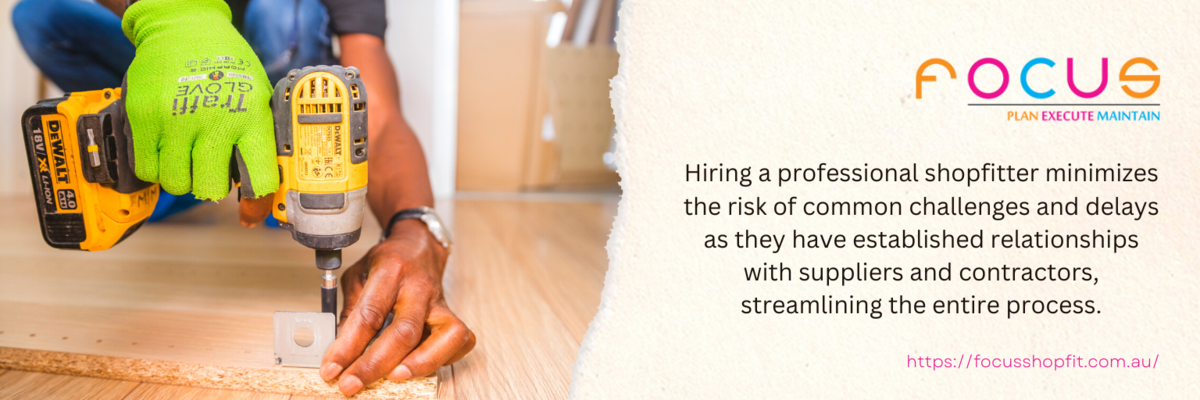
Tips for efficient shopfitting project management
Efficient project management is crucial for the timely completion of a shop fitout project. Here are some tips to ensure smooth progress:
- Clear communication: Maintain open and transparent communication channels with all stakeholders involved in the project, including contractors, suppliers, and the client.
- Detailed planning: Develop a comprehensive project plan that includes all tasks, timelines, and dependencies. Review and update the plan regularly with proper communication.
- Regular progress tracking: Monitor the progress of the project regularly, keeping a close eye on timelines, milestones, and any potential delays.
- Streamline decision-making: Establish clear decision-making processes to avoid unnecessary delays. Ensure that all parties involved are aware of their roles and responsibilities in making timely decisions.
- Collaborative approach: Foster a collaborative environment where all contractors and tradespeople work together seamlessly. Encourage regular communication and problem-solving.
Common challenges and delays in shopfitting projects
Despite careful planning and project management, shopfitting projects can face challenges and delays. Some common issues include:
- Permit delays: Obtaining necessary permits from local authorities can sometimes take longer than anticipated, leading to project delays.
- Changes in design plans: If there are any modifications or additions to the initial design plan, it can impact the timeline and require adjustments in construction.
- Unforeseen site restrictions: Discovering unexpected site restrictions or structural issues during the construction phase can lead to delays as additional work may be required to overcome these challenges.
- Material or equipment delays: Delays in the delivery of materials or equipment can halt the progress of the project. It is essential to have backup plans and alternative suppliers in case of such delays.
Hiring a professional shopfitting company in Australia
When embarking on a shop fitout project, it is recommended to hire a professional shopfitting company in Australia. These companies have the expertise, experience, and resources to manage shopfitting projects efficiently. They can provide valuable insights, and creative design solutions to ensure that the project stays on track and within the estimated timeframe. Hiring professionals also minimizes the risk of common challenges and delays as they have established relationships with suppliers and contractors, streamlining the entire process.

Factors to consider when estimating the duration of a shop fitout
Estimating the duration of a shop fitout involves considering various factors, including the size and complexity of the store, availability of materials and equipment, involvement of multiple contractors, and potential challenges or delays. On average, small to medium-sized retail stores can take 4 to 8 weeks, while larger and more intricate designs may require 8 to 12 weeks or more. Efficient project management, clear communication, and collaboration can help mitigate delays and ensure timely completion. By hiring a professional shopfitting company, businesses can benefit from their expertise and experience, resulting in a successful shop fitout that aligns with the brand's vision and enhances the customer's experience.
Australian Shopfitting 101: Effective Shopfitting On A Tight Budget
Shopfitting plays a crucial role in the success of Australian retailers. It involves designing and fitting out retail spaces to create an inviting environment that attracts customers and encourages them to make purchases. Effective shopfitting goes beyond aesthetics; it considers the functionality and layout of the store to optimize customer flow and enhance the overall shopping experience.

Australian retailers understand the significance of creating a visually appealing store that reflects their brand identity. Shopfitting allows them to showcase their products in the best possible way, enabling customers to easily find what they are looking for. It helps to establish a positive first impression and builds customer loyalty. In a competitive retail landscape, shopfitting can make a significant difference in attracting and retaining customers.
Understanding the concept of effective shopfitting
To achieve effective shopfitting, Australian retailers need to focus on a few key aspects. Firstly, they should have a clear understanding of their target market and tailor the store's design accordingly. The layout, color scheme, and overall ambiance should align with the preferences and needs of the intended customers.
Effective shopfitting requires careful consideration of the store's functionality. The placement of shelves, racks, and display units should be optimized to ensure easy navigation for customers. The flow of foot traffic should be smooth, leading customers through the store logically and intuitively.
A successful shopfitting project typically involves integrating technology and digital signage to enhance the shopping experience. Interactive displays, touchscreens, and mobile apps can provide customers with additional information about products, promotions, and loyalty programs. This not only engages customers but also provides retailers with valuable data for improving their marketing strategies.
Shopfitting on a tight budget: Is it possible?
Shopfitting can be a costly endeavor, especially for retailers on a tight budget. However, with careful planning and creativity, it is possible to achieve effective shopfitting without breaking the bank. Australian retailers need to prioritize their expenses and allocate their budget wisely to get the best results.
One approach is to focus on essential shopfitting elements that have the most impact on the overall store design. By investing in high-quality flooring, lighting, and signage, retailers can create a professional and inviting atmosphere. These elements set the foundation for a successful shopfitting project and can be complemented with more cost-effective solutions for other aspects.
Another cost-saving strategy is to consider pre-owned or refurbished fixtures and furniture. Many suppliers offer second-hand shopfitting items that are still in good condition. With proper cleaning and maintenance, these items can be a budget-friendly alternative to new fixtures. Additionally, retailers can explore local auctions or online marketplaces for discounted shopfitting materials.
Budget-friendly shopfitting strategies for Australian retailers
To achieve effective shopfitting on a tight budget, Australian retailers can employ various strategies. By adopting a creative and resourceful approach, retailers can create a visually appealing store without overspending.

Choosing cost-effective materials and fixtures for shopfitting
One key aspect of cost-effective shopfitting is selecting the right materials and fixtures. Retailers should prioritize durability and functionality while considering the cost. For example, laminate or vinyl flooring can be a more affordable alternative to hardwood or stone flooring, without compromising on aesthetics. Similarly, retailers can opt for modular shelving systems that offer flexibility and easy customization at a lower cost compared to custom-built shelves.
Creative shopfitting ideas for a tight budget
Creativity is essential when working with a limited budget. Retailers can explore innovative ideas to make the most of their available resources. For instance, repurposing old furniture or using unconventional materials such as pallets or crates can add a unique touch to the store's design. Retailers can also consider DIY projects for smaller fixtures or displays, which can save costs while adding a personal touch to the store.
DIY vs. professional shopfitting: Which is the better option for budget-conscious retailers?
The decision between DIY and professional shopfitting depends on various factors, including the complexity of the project, the retailer's expertise, and available resources. While DIY shopfitting can be a cost-saving option, it requires a significant investment of time and effort. Retailers need to have the necessary skills and knowledge to execute the project successfully. In contrast, professional shopfitters bring expertise and experience to the table, ensuring a seamless and efficient shopfitting process. They can provide valuable advice, access to suppliers, and professional installation services. Retailers should evaluate their circumstances and make an informed decision based on their budget and requirements.
Shopfitting mistakes to avoid when on a shoestring budget
While shopfitting on a tight budget is possible, Australian retailers should be mindful of common mistakes that can hinder the effectiveness of their efforts. One common mistake is overspending on unnecessary decorative elements or excessive branding. It's important to strike a balance between aesthetics and functionality, focusing on essential elements that create a positive shopping experience. Another mistake to avoid is neglecting maintenance and upkeep. Even with limited resources, retailers should allocate a portion of their budget for regular maintenance and repairs. This ensures that the shopfitting remains in good condition, maintaining its effectiveness and longevity.

Shopfitting on a shoestring - it's possible!
Effective shopfitting is essential for Australian retailers to create a visually appealing and functional store that attracts customers. While shopfitting can be a costly endeavor, it is possible to achieve great results on a tight budget. By prioritizing essential elements, considering cost-effective materials, and embracing creativity, retailers can create a successful shopfitting project without overspending. By learning from successful case studies and avoiding common mistakes, Australian retailers can achieve effective shopfitting that enhances their brand and drives customer engagement. So, embrace the challenge of shopfitting on a shoestring budget and create a store that stands out in the competitive retail landscape.
Australian Shopfitting 101: Cost of Shopfitting and ROI Considerations
Shopfitting plays a crucial role in the success of any retail business in Australia. It involves the design, construction, and installation of fixtures, fittings, and furniture that make a store visually appealing and functional. In a highly competitive market, shopfitting is a way for businesses to create a unique and attractive space that attracts customers and enhances the overall shopping experience. This article delves into the cost of shopfitting in Australia and the return on investment (ROI) considerations for businesses.

Importance of shopfitting for businesses
In the competitive retail landscape of Australia, shopfitting is more than just creating a visually appealing store. It is about creating a unique brand identity, enhancing customer experience, and maximizing sales potential. A thoughtfully designed shopfitting can create a lasting impression on customers, differentiate a business from its competitors, and drive customer loyalty. It is an investment that can lead to increased footfall, higher conversion rates, and ultimately, higher profits.
Shopfitting also plays a crucial role in creating a seamless and efficient store layout. A well-designed store layout can enhance customer flow, improve product visibility, and optimize the use of available space. This, in turn, can lead to increased sales and improved operational efficiency.
Factors Affecting Shopfitting Costs in Australia
The cost of shopfitting in Australia can vary significantly depending on several factors. Some of the key factors that influence the overall cost include:
Size and complexity of the store:
The size and complexity of the store are major determinants of the shopfitting cost. Larger stores require more materials and labor, which can drive up the overall cost. Similarly, stores with intricate designs or unique requirements may require specialized expertise, resulting in higher costs.
Quality of materials and finishes:
The choice of materials and finishes used in shopfitting can greatly impact the cost. Premium materials and finishes tend to be more expensive but can also create a more luxurious and high-end look. On the other hand, cost-effective materials can help keep the budget in check without compromising on functionality and aesthetics.
Customization and branding requirements:
If a business requires custom fixtures, fittings, or branding elements, the cost of shopfitting may increase. Customization often involves additional design and manufacturing processes, which can add to the overall cost. However, it also allows businesses to create a unique and cohesive brand image that resonates with their target audience.
Location:
The location of the store can also affect the cost of shopfitting. Certain areas may have higher labor costs or specific regulatory requirements that need to be considered during the shopfitting process. It is essential to factor in these location-specific considerations when budgeting for shopfitting.
Shopfitting costs in Australia: getting accurate estimates
Businesses should consult with professional shopfitting companies to get accurate cost estimates based on their unique needs and specifications. A reliable shopfitting company will provide a detailed breakdown of costs, helping businesses make informed decisions and avoid unexpected budget overruns.
Calculating the return on investment (ROI) of shopfitting
While shopfitting is an investment for businesses, it is essential to evaluate the return on investment (ROI) to determine its effectiveness. Calculating the ROI of shopfitting involves considering the increase in sales, customer satisfaction, and brand value resulting from the project.
To calculate the ROI, businesses can compare the pre-shopfitting and post-shopfitting sales figures, taking into account any increase in revenue. Additionally, customer feedback and satisfaction surveys can provide valuable insights into the impact of shopfitting on customer experience. Businesses can also assess the brand value and recognition generated through the shopfitting project.
By analyzing these factors, businesses can determine the overall impact of shopfitting on their bottom line and make informed decisions about future investments in improving stores.
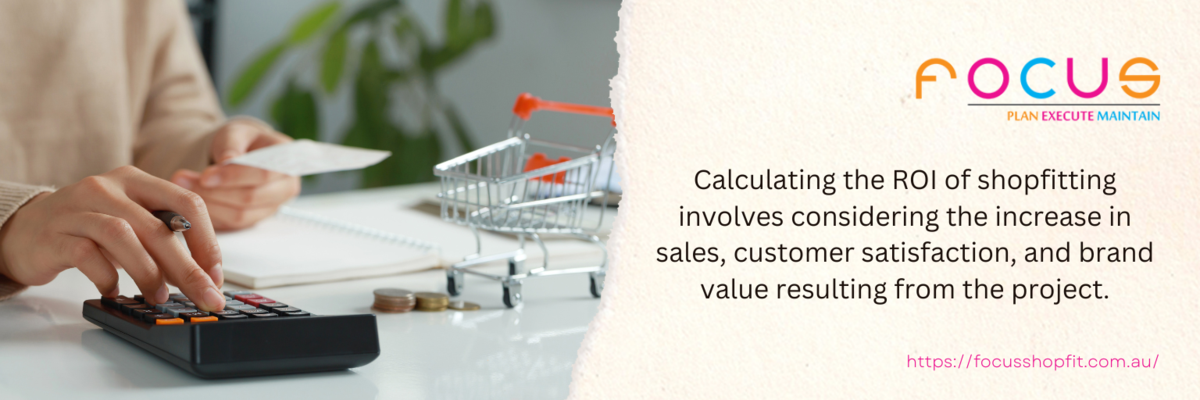
Tips for maximizing profits through effective shopfitting
To maximize profits through effective shopfitting, businesses can consider the following tips:
Understand your target audience:
Before embarking on a shopfitting project, it is crucial to have a deep understanding of the target audience. This will help in creating a store environment that resonates with their preferences and expectations.
Focus on functionality:
While aesthetics are important, ensuring the store layout and fixtures are functional is equally crucial. A well-designed store layout can enhance customer flow, improve product visibility, and optimize space utilization.
Incorporate branding elements:
Integrating branding elements into the shopfitting design can create a cohesive brand image and reinforce brand identity. Consistent branding throughout the store can help in building brand recognition and customer loyalty.
Embrace technology:
Leveraging technology in shopfitting can enhance the overall customer experience. Interactive displays, digital signage, and virtual reality elements can engage customers and create a memorable shopping experience.
Regular maintenance and updates:
To ensure the shopfitting remains effective in the long run, regular maintenance and updates are essential. This includes keeping the store clean, fixing any damages, and refreshing the store design periodically to stay relevant and appealing to customers.
Choosing the right shopfitting company in Australia
Selecting the right shopfitting company is crucial for a successful project. When choosing a shopfitting company in Australia, businesses should consider the following factors:
Experience and expertise:
Look for a shopfitting company with a proven track record and extensive experience in the industry. An experienced company will have the knowledge and skills to handle complex projects and deliver high-quality results.
Portfolio:
Review the company's portfolio and ask feedback from previous clients. This will give businesses an idea of the company's capabilities and the satisfaction level of their past clients.
Customization capabilities:
If businesses have specific customization requirements, ensure that the shopfitting company can deliver tailored solutions. Discuss the customization options and assess the company's ability to meet unique project needs.
Budget and timeline:
Discuss the budget and timeline requirements with the shopfitting company upfront. A reliable company will provide a detailed cost breakdown and a realistic timeline for the project.
Communication and collaboration:
Effective communication and collaboration are essential for a successful shopfitting project. Choose a shopfitting company that values open communication and is willing to work closely with the business to achieve the desired outcomes.

Investing in shopfitting for long-term success
Shopfitting is a critical investment for businesses in Australia. It not only enhances the visual appeal of a store but also creates a unique brand identity and improves the overall customer experience. While the cost of shopfitting can vary depending on various factors, businesses can expect a significant return on investment through increased sales, customer satisfaction, and brand recognition. By following the tips mentioned in this article and choosing the right shopfitting company, businesses can maximize the profits generated from effective shopfitting projects.

